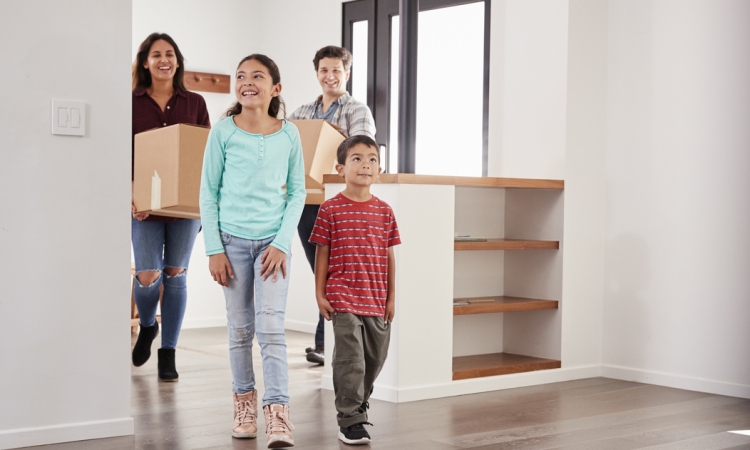Moving can be a challenging task for families, especially with tweens who are experiencing crucial emotional and social development. The disruption of moving can affect their well-being, making it essential to plan a move that minimizes their stress. This guide provides parents with strategies to support tweens through the transition.
What age is hardest for kids to move?
Children of all ages face challenges when moving, but certain developmental stages can amplify these difficulties.
Early childhood to pre-adolescence: Young children adjust more easily to new environments but may need extra parental comfort.
Tweens (ages 9-12): This group often finds moving difficult due to increased social awareness and personal identity concerns. They understand the move’s long-term effects, which may increase their anxiety and resistance.
Teenagers: With their strong social ties and school integration, they may find moving the most challenging.
For tweens, the shift to abstract thinking deepens the anticipation of a move’s consequences, leading to worries about new social dynamics. Parents should acknowledge these feelings and involve tweens to alleviate their stress.
What is the best age to move with kids?
Relocating with children depends on their emotional and social readiness. Young children (ages 3-5) are generally more adaptable as their social connections are just forming. However, moving before significant educational transitions, such as entering kindergarten, middle, or high school, can be beneficial. These times allow children to settle into new environments before facing more rigorous academic and social demands.
How do you handle moving with tweens?
When moving with tweens, involve them in the process to help manage anxiety and give them a sense of control. This can include allowing them to make decisions about aspects of the move, like room decoration or planning farewell activities. You can also ask for their input on the new neighborhood or school, which can make them feel more invested in the move and less anxious about the unknown.
Maintaining consistent routines during the move is crucial for providing stability, and open communication about the move’s logistics and emotional impact is essential. Discuss the reasons for the move, the changes it will entail, and how their life will be both different and the same. Acknowledge their feelings and provide reassurance that their concerns are valid and important.
Combining preparation, participation, and communication helps tweens adjust to their new environment more smoothly, ensuring a less stressful transition for the entire family.
Preparing tweens for a move
When preparing tweens for a move, open discussions help initiate conversations about the upcoming transition, letting tweens voice their feelings and concerns. Visiting the new area with your tween can make the unfamiliar surroundings more familiar and comfortable, easing the adjustment process. Focusing on the positive aspects of the move, such as new opportunities for hobbies and friendships, can also be uplifting and reassuring.
Involving tweens in decisions regarding their new living space and school helps them feel more in control and reduces anxiety. Maintaining routine consistency as much as possible provides a stable environment, supporting a smoother adjustment to their new home.
For practical preparations, involving your tween in packing their belongings can be a great way to empower them and give them a sense of involvement. This can include letting them decide what’s essential to keep and how to organize their things. Packing an essentials kit with immediate necessities like favorite toys or books can comfort them during the transition.

Organizing a farewell event with friends offers closure and celebrates the friendships they’ve developed. Allowing tweens to help design their new room makes settling into the new city exciting and personal. Lastly, researching and discussing new activities or clubs in the new area that match their interests can help them integrate and make new friends, further easing the transition.
Tween emotional adjustment during a move
Moving can evoke a spectrum of emotions in tweens, from excitement and curiosity to anxiety and sadness. They may feel fear of the unknown, sadness over leaving friends and familiar places, and frustration from losing control over their environment. At the same time, they may also exhibit excitement about new opportunities or a fresh start in a new place. Understanding these emotions can help parents respond appropriately and provide the necessary support.
Parents should be vigilant for signs of stress such as changes in eating and sleeping habits, withdrawal from social interactions, declines in academic performance, or increased irritability. If these signs persist or if the tween seems overwhelmed, consulting a mental health professional might be wise. They can provide guidance and strategies to manage stress and adapt to the new setting.
Moving schools with tweens
Going to a new school can be challenging. Parents can ease this transition by involving tweens in the process of selecting the new school or by arranging a visit to the school before the move to familiarize them with the new environment. It’s also helpful to connect with teachers and counselors who can watch for signs of difficulty adjusting and offer extra support.
Encouraging friendships and involvement in extracurricular activities can significantly help tweens integrate into a new school. Encourage them to join clubs, sports teams, or other groups that align with their interests. This can help them meet peers with similar interests and begin forming new friendships. Consider arranging playdates or social outings with their new classmates to help them build connections outside school.
Settling tweens in a new city
Helping tweens acclimate to a new city involves both practical and emotional support. Start by exploring the new community together to find places that match their interests, such as libraries, parks, or sports facilities. This exploration can help your tween feel more connected to the new environment.
Promoting engagement with community resources like youth groups, music classes, or sports teams can also provide valuable social opportunities. These activities help tweens feel more at home and reinforce a sense of belonging and community attachment. Encouraging regular communication with old friends while building new relationships can help maintain a balance during this transition, providing a sense of continuity and support.
Packing tips for families with tweens
Involve the entire family in the packing process to distribute tasks and make it feel like a team effort. Create a packing schedule that breaks down the process into manageable parts, assigning specific roles and responsibilities to each family member, including tweens. This structured approach can help keep everyone organized and reduce the feeling of being overwhelmed.
To make packing an engaging activity for tweens, turn it into a game or challenge. You can set timers to see who can pack their books the fastest or who can come up with the most efficient way to pack their clothes. Offer small rewards for completing tasks or for innovative packing ideas. Encourage tweens to personalize their boxes with stickers or markers, making the task more enjoyable and allowing them to express their creativity.
Conclusion
Throughout the moving process, try to focus on the needs of your tweens. Make sure they feel involved and supported. From preparing emotionally and practically to settling into a new school and community, they can make the adjustment with your support. Maintain open communication, encourage participation in community activities, and make packing a fun part of the move.


